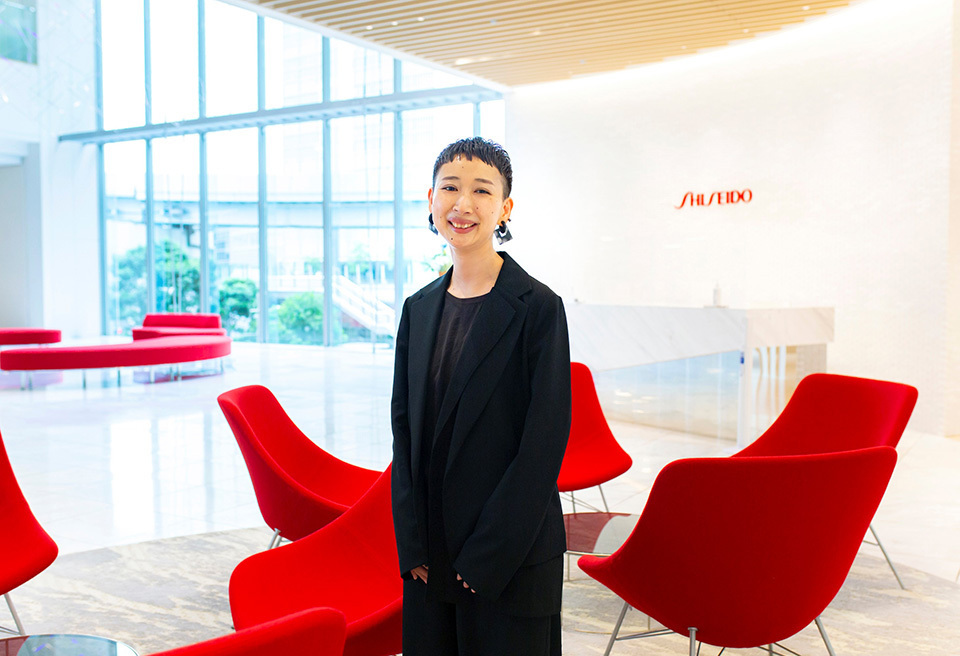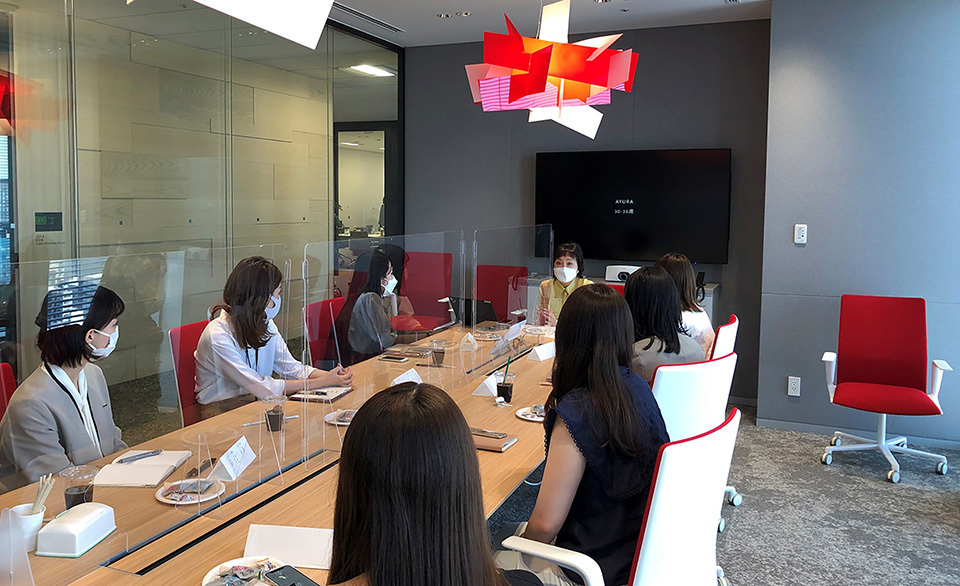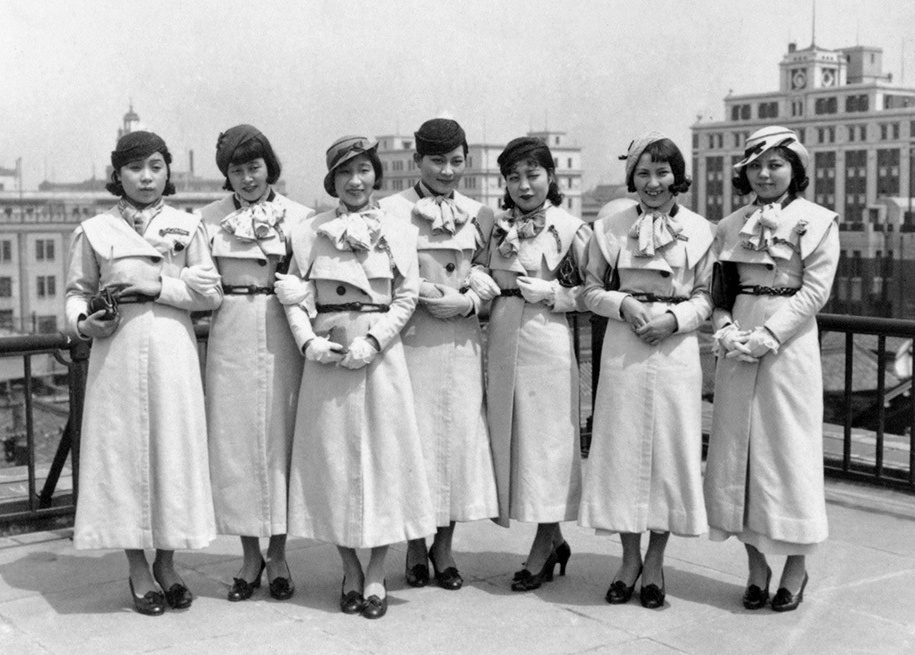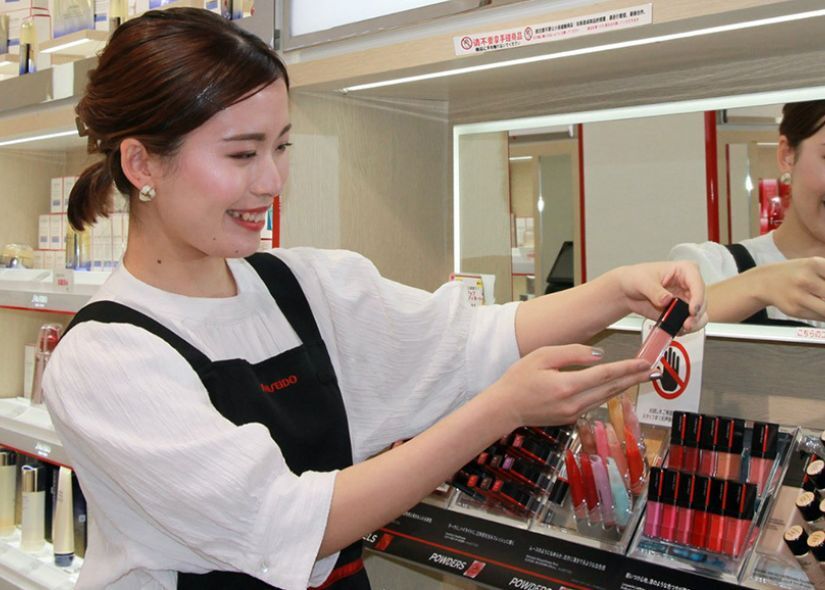While making great strides as a global company, the Shiseido Group also acts as a pioneer in promoting gender equality and the empowerment of women. Behind those efforts is a corporate culture that has been passed down since the company was founded 150 years ago.

“As our business expands globally—though the circumstances surrounding female employees differ from country to country—we come to see that we all share the same fundamental challenges, including the lack of role models and the existence of mental hurdles,” says IMAIZUMI Chiharu, director of the People & Organization Development section of Shiseido’s People Division. “There is no one solution. We will continue to provide various kinds of mechanisms to resolve those challenges by all possible means.”
The Shiseido Group, a Japanese cosmetics giant, has more than 40,000 employees globally, with business operations in about 120 countries and regions. While it is, on the one hand, a venerable company that celebrated its 150th anniversary in 2022, it is also a pioneer that has taken the lead in promoting gender equality and female empowerment by positioning diversity and inclusion as pillars of its management strategy. Though many Japanese companies are on their way toward the goal of having 30% of their management positions filled by women, Shiseido has already gone beyond that, with women making up more than 37% of the company’s managers in Japan and more than 58% of their managers globally. “Providing opportunities for women and others in diverse positions to develop their careers contributes to our organization’s growth and innovation,” says IMAIZUMI Chiharu, director of the People & Organization Development section of the company’s People Division. “We also hope that our actions will help create a change in society.”
Shiseido started working wholeheartedly toward promoting gender equality and women’s empowerment in the early 1990s. That was triggered by the fact that even after Japan’s enforcement of the Equal Employment Opportunity Act in 1986, which prohibited discrimination against workers on the basis of sex, many women were still resigning from the company after getting married or having children. To address that situation, Shiseido introduced various new systems, including shorter workdays and workplace daycare, and carried out more detailed support measures such as allocating extra staff during peak evening hours, enabling beauty consultants raising children to balance work and childcare more easily. Thanks to such efforts, today more than 99% of women in management and career-track positions, and more than 92% of beauty consultants, return to work after taking parental leave.

A scene from “Speak Jam,” a mentoring program in which female employees in various areas—from sales to production and R&D—can speak directly with female executives of the company. According to Imaizumi, “Some in the company say that although there are many female employees, finding a role model is difficult. We want to provide them with the opportunity to create a patchwork of role models by matching individuals with a variety of senior employees.”
From 2017, the company also began to focus on cultivating new female leaders, such as by starting a leadership program for those with notable potential. The program not only instructs these women in the skills necessary for upward career progression, but also includes lectures and mentoring by female Shiseido executives. Its primary aim is to sweep away biases regarding senior positions. According to Imaizumi, “There are unconscious biases relating not only to gender, but also to position. Many capable women believe that they don’t have what it takes to be a leader because of their stereotypes about leadership positions. By recognizing those biases and letting go of them, these women can breathe new life into and re-ignite their original visions and dreams. Since they are all very competent, once that fire is kindled, they will be able to master whatever skills they need on their own. The key is how much of that fire can be kindled.”
Behind such efforts is the corporate culture that has been passed down over Shiseido’s long years of history. Imaizumi explains, “Since our company started as a private dispensing pharmacy, at our foundation has been the desire to create a better society in which everyone can lead healthy lives, both in body and in mind. That is why, in every era, we have been actively engaged in developing human resources and finding solutions to social issues.”
In the early days of the company, employees were sent to night school to study whatever they were interested in, and in the mid-1930s, the company created “Miss Shiseido,” a staff position that became a coveted career option for women, and that was the predecessor for Shiseido’s beauty consultants. In the future, the company aims to achieve a 50:50 ratio of men and women in managerial positions in Japan. Also, in the fall of next year, it plans to establish the Shiseido Future University at its head office in Ginza, Tokyo, to develop the next generation of global leaders. “There is still much that can be done. We will continue to take on new challenges from multiple angles.”


Shiseido has continually endeavored to provide women with an environment in which they can work to freely demonstrate their abilities, in accordance with the times. Back in 1934, when few women in Japan belonged to the workforce, the company created a staff position known as “Miss Shiseido” (left), who was the forerunner to Shiseido’s beauty consultants of today. In 2006, the company introduced a system of allocating extra staff (right) during peak evening hours to enable beauty consultants raising children to balance work and childcare more easily.
Shiseido has continually endeavored to provide women with an environment in which they can work to freely demonstrate their abilities, in accordance with the times. Back in 1934, when few women in Japan belonged to the workforce, the company created a staff position known as “Miss Shiseido” (top), who was the forerunner to Shiseido’s beauty consultants of today. In 2006, the company introduced a system of allocating extra staff (bottom) during peak evening hours to enable beauty consultants raising children to balance work and childcare more easily.


